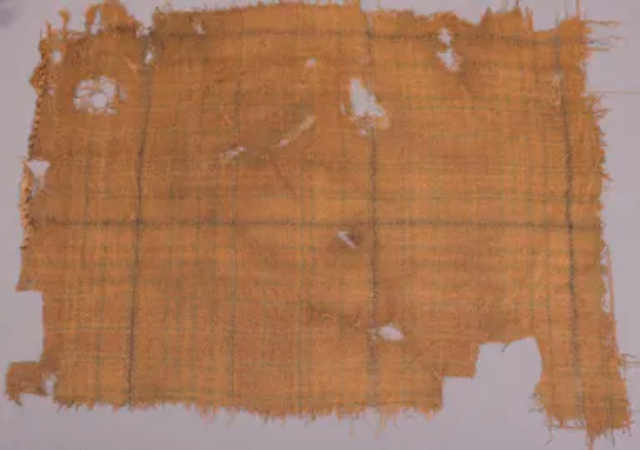
-
After More Than 500 Years In A Bog, The World’s Oldest Tartan Design Is Now For Sale
19 Feb 2024 by Heinrich in History, World
[imagesource:simonfraseruni/flickr]
After being immersed in a peat bog for almost 500 years, the world’s oldest authentic tartan has been resurrected and made accessible to the public.
The Glen Affric tartan, named after the Highlands area where it was discovered in the 1980s, underwent dye analysis and radiocarbon testing last year, indicating that it dates from 1500 to 1600. Researchers classified it as ‘outdoor working clothing’.
The 53-by-43 centimetre wool fabric was the centrepiece of the recent V&A Dundee’s “Tartan” exhibition, which explored the textile’s global footprint. It has since been refashioned by the House of Edgar, a Scottish tartan manufacturer and distributor, in collaboration with a tartan historian. The initial set of clothes sold out in five days.
“The significance of the Glen Affric tartan was unquestionably huge to both the world of tartan and Scottish heritage.”
Recreating the oldest tartan in the world was however no easy task. First, the crisscross pattern, thread count, and colours had to be deciphered. The testing technique, which lasted more than six months and was built on early research undertaken by the National Museums of Scotland, confirmed the use of green, red, yellow, and brown, all of which were derived from organic materials such as woad and madder.
[image:v&adundee/houseofedgar]
“The historical piece is not as uniform in design as tartans are today,” Wilkinson said. “We landed on a symmetrical tartan design, in a thread count derived from the original, and dyed yarns specifically for this tartan to ensure they were absolutely perfect.”
The end result is a design that keeps the fabric’s original patterns and colours, while subtle adjustments were made to make it suitable for modern fashionistas.
The tartan is available as a kilt or an accessory, and the House of Edgar includes it in their “Seventeen Eighty Three Collection,” which is named after the year Alexander Macnaughton, the company’s founder, opened a tiny spinning mill to handle wool.
Few textiles from the region, particularly wool, have survived for more than a few centuries due to the rate at which they disintegrate in soil. The low oxygen and acidity of peat bogs however allows for an ideal environment to preserve natural materials, as proven by the countless bog bodies discovered throughout northern Europe.
[source:artnet]
Latest News
-
Thai Woman Sentenced To Death For Murdering 14 Friends With Cyanide In Shocking Killing Spree
[imagesource: Sararat Rangsiwuthaporn] A woman in Thailand, dubbed 'Am Cyanide' by Thai...
-
René Magritte Painting Sells For Record R2.1 Billion At Auction
[imagesource:renemagritte.org] A René Magritte painting portraying an eerily lighted s...
-
Brave Rape Survivor Alison Botha Faces New Challenge After Brain Surgery
[imagesource: Alison Botha] Gqeberha rape survivor Alison Botha, a beacon of resilience...
-
Get Ready For The Mother of All Celebrations As MCQP Turns 30
[imagesource:mcqp/facebook] Clutch your pearls for South Africa’s favourite LGBTQIA+ ce...
-
The Iconic Good Hope Centre Is Set For Redevelopment
[imagesource:capetown.gov] The City of Cape Town’s Mayoral Committee has approved the...
-






























